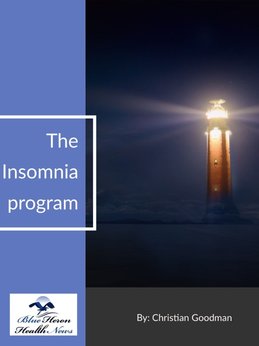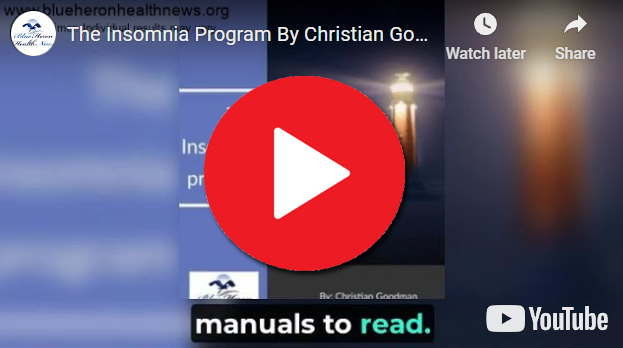
The Insomnia Program™ By Christian Goodman This program has been created by Christian Goodman, a natural health expert and sufferer of insomnia. He has used an audio program to let your fall sleep with the help of a bit of a hypnotic effect on your body.
What is the role of actigraphy in diagnosing sleep disorders?
Actigraphy plays an important role in diagnosing and managing sleep disorders, particularly those related to sleep-wake patterns and circadian rhythm disturbances. It is a non-invasive method that involves wearing a small, wristwatch-like device called an actigraph or actimeter that tracks movement over time. The collected data helps provide insight into a person’s sleep patterns, duration, and quality. Here’s how actigraphy contributes to diagnosing sleep disorders:
1. Assessing Sleep-Wake Patterns
Actigraphy helps record continuous movement data, which can be analyzed to infer sleep and wake periods. By tracking body movements, it estimates when a person falls asleep, when they wake up, and the overall duration of sleep. This makes actigraphy particularly useful for diagnosing conditions like:
- Insomnia: Actigraphy helps identify patterns of delayed sleep onset, frequent nighttime awakenings, and overall sleep fragmentation. It can differentiate between perception of poor sleep quality and actual sleep duration.
- Circadian Rhythm Sleep-Wake Disorders: These disorders, such as delayed sleep phase disorder (where the person goes to sleep and wakes up much later than usual) or advanced sleep phase disorder (where sleep happens earlier than normal), are well-suited for actigraphy. It can track abnormal sleep-wake cycles over extended periods to identify circadian misalignment.
- Shift Work Sleep Disorder: In individuals who work irregular shifts, actigraphy can be used to monitor how their sleep schedules fluctuate with work shifts and help assess their ability to maintain regular sleep patterns.
2. Long-Term Monitoring
Actigraphy allows for long-term data collection over days or weeks, providing a comprehensive picture of an individual’s sleep behavior in their natural environment. Unlike a sleep study conducted in a lab (which usually covers only one night), actigraphy gives a broader view of typical sleep habits. This is especially helpful for diagnosing:
- Chronic Insomnia: Actigraphy tracks sleep-wake patterns over time, which can help assess whether insomnia symptoms are chronic or intermittent.
- Circadian Rhythm Disorders: Long-term actigraphy is particularly useful in evaluating circadian rhythm sleep-wake disorders, as it can measure the consistency of a person’s sleep-wake cycles over a period of several days or weeks.
3. Complementary to Sleep Diaries
Actigraphy is often used in combination with sleep diaries, where the patient manually records their sleep patterns. Together, these methods provide a more complete picture of the individual’s sleep habits. The objective data from actigraphy can either confirm or contrast with the subjective reports from a sleep diary, which is especially valuable for people with sleep misperception, where their perception of sleep does not match the actual amount of sleep they are getting.
4. Diagnosing Sleep Apnea and Movement Disorders
- Sleep Apnea: Although actigraphy cannot directly diagnose sleep apnea (for which polysomnography is needed to monitor breathing patterns and oxygen levels), it can be useful in identifying potential sleep fragmentation. If frequent periods of restlessness and wakefulness are detected, this may indicate the presence of an underlying sleep disorder like sleep apnea.
- Restless Leg Syndrome (RLS) and Periodic Limb Movement Disorder (PLMD): Actigraphy is useful for assessing the amount of movement during sleep. It can help detect excessive leg movements that are characteristic of these conditions, contributing to the diagnosis and further evaluation.
5. Non-Invasive and Easy to Use
One of the major benefits of actigraphy is that it is a non-invasive, easy-to-use tool that allows patients to follow their normal routines at home while their sleep data is being collected. This is especially beneficial for:
- Children and Elderly Patients: Actigraphy can be used in populations where overnight sleep studies may be challenging or impractical, such as in children or older adults. It provides valuable insights without the need for extensive monitoring equipment.
- Home-Based Monitoring: Because actigraphy is portable, it allows for monitoring outside of a clinical setting, offering a more naturalistic representation of a person’s sleep habits.
6. Evaluating Sleep Interventions
Actigraphy is also valuable in assessing the effectiveness of sleep treatments or interventions. It can monitor changes in sleep patterns over time, helping healthcare providers adjust therapies based on objective data. This is particularly useful when:
- Tracking the impact of cognitive-behavioral therapy for insomnia (CBT-I) or other non-pharmacological interventions.
- Evaluating the effects of light therapy or melatonin for treating circadian rhythm disorders.
- Monitoring the response to medications that target sleep disorders.
7. Limitations of Actigraphy
While actigraphy is a valuable tool for diagnosing certain sleep disorders, it has some limitations:
- Inability to measure sleep architecture: Unlike polysomnography (PSG), actigraphy cannot measure sleep stages such as REM (rapid eye movement) sleep or deep sleep. Therefore, it cannot diagnose conditions that require detailed analysis of sleep architecture, such as sleep apnea or narcolepsy.
- Reliance on movement detection: Actigraphy relies on detecting movement to infer sleep or wake states, which may lead to inaccurate results in certain individuals. For example, a person may lie still but remain awake (which actigraphy might interpret as sleep), or someone may move while asleep (interpreted as wakefulness).
Conclusion
Actigraphy is a valuable tool for diagnosing and managing sleep disorders, particularly in assessing sleep-wake patterns, circadian rhythm disturbances, and insomnia. It provides long-term, non-invasive monitoring of sleep in a natural environment, making it useful for both diagnosis and treatment evaluation. However, it is often used in conjunction with other diagnostic tools, such as sleep diaries and polysomnography, to get a complete picture of an individual’s sleep health.

The Insomnia Program™ By Christian Goodman This program has been created by Christian Goodman, a natural health expert and sufferer of insomnia. He has used an audio program to let your fall sleep with the help of a bit of a hypnotic effect on your body.